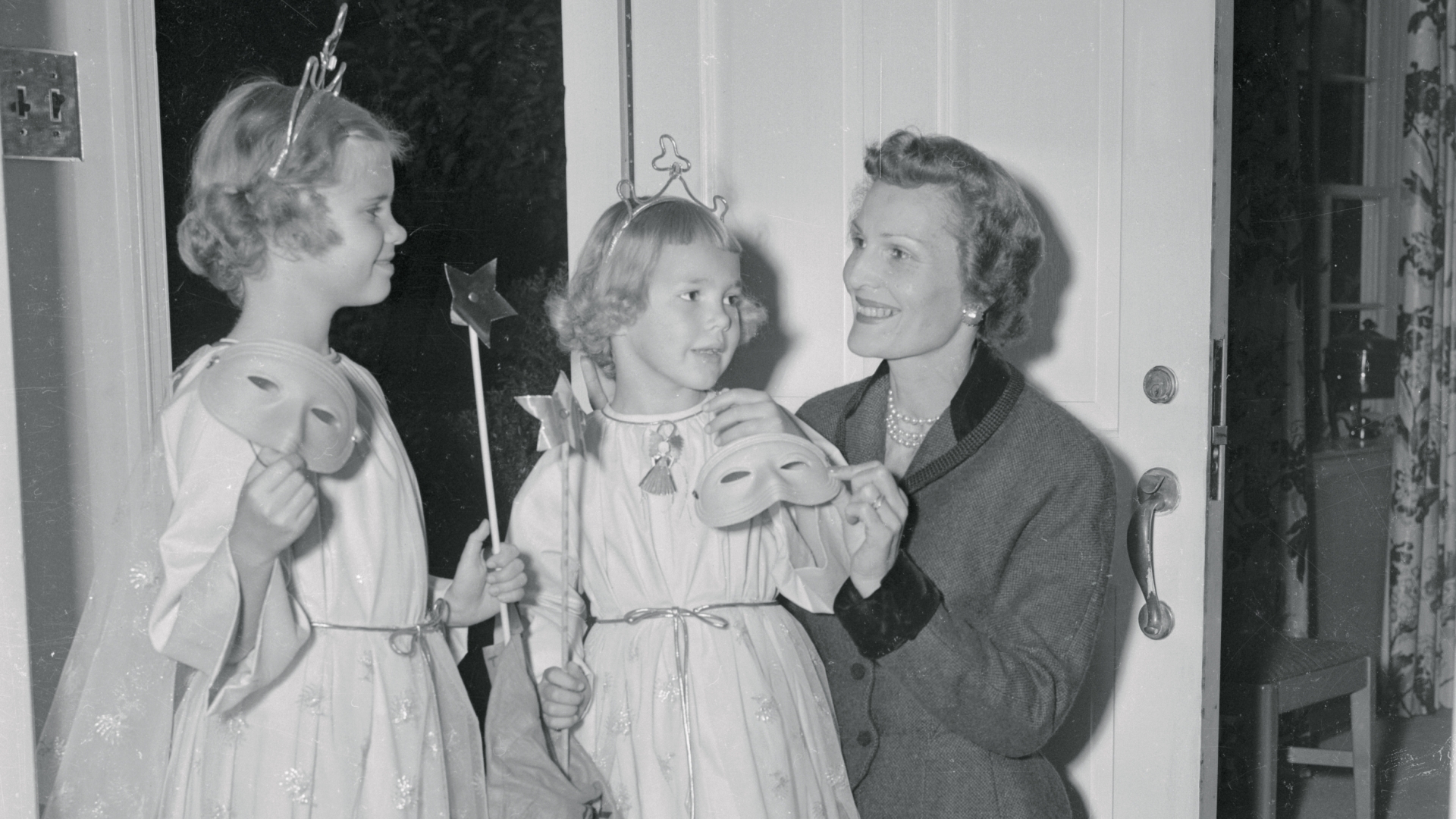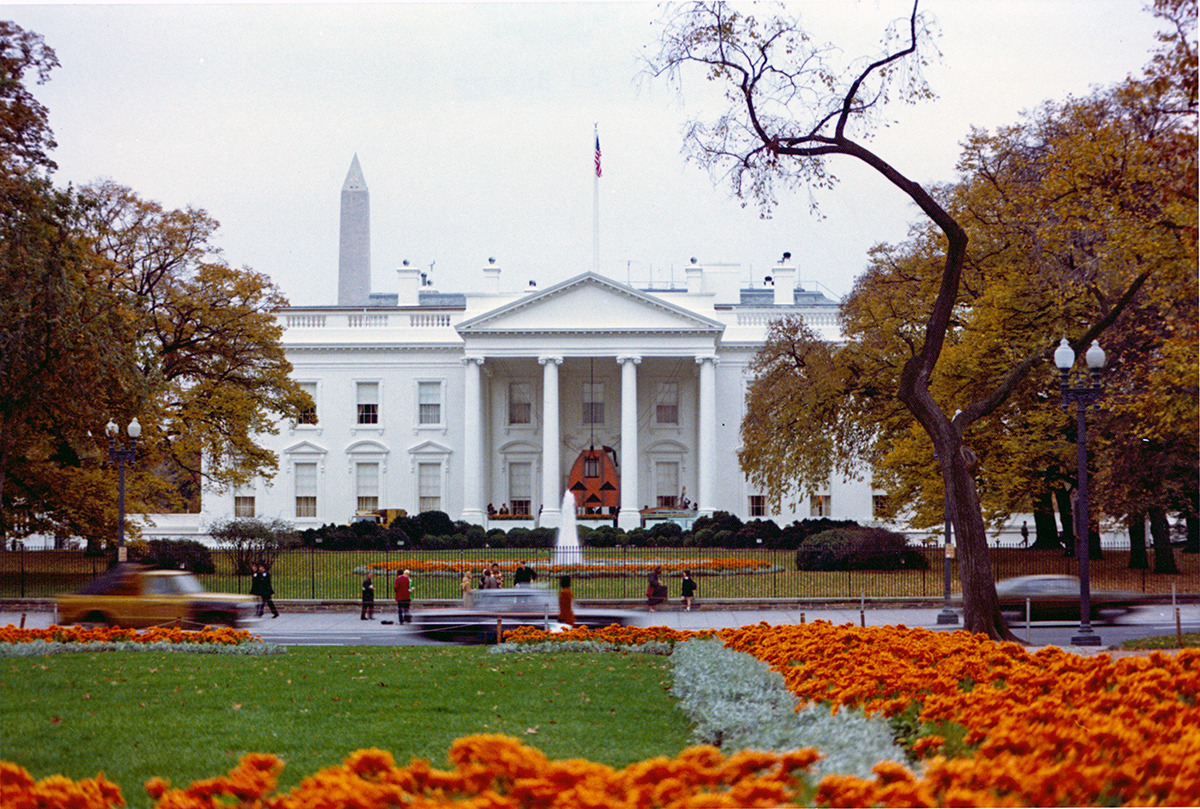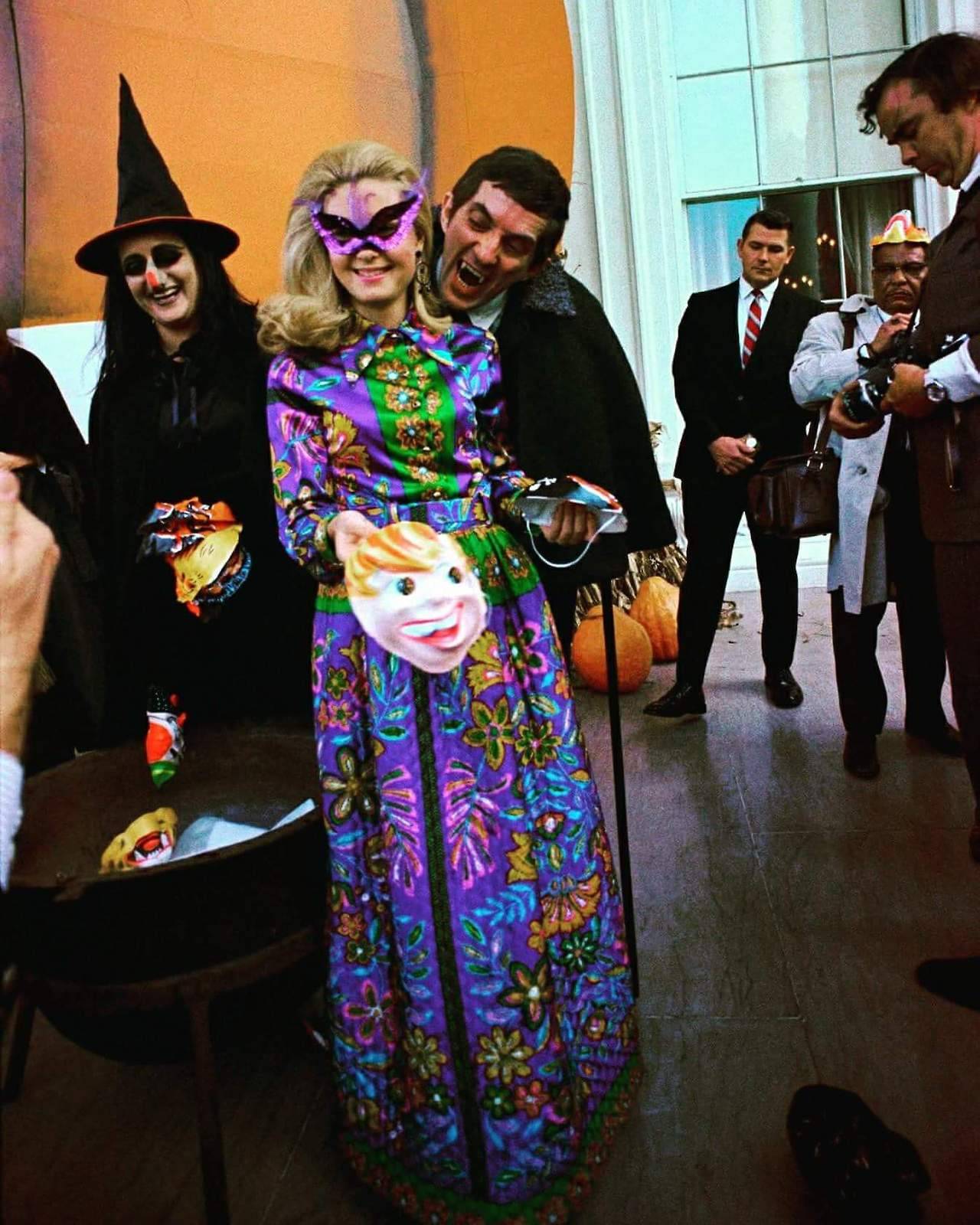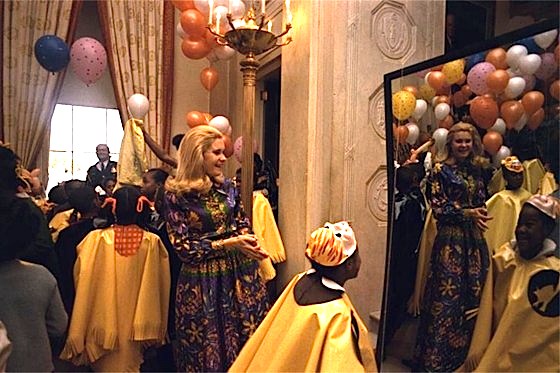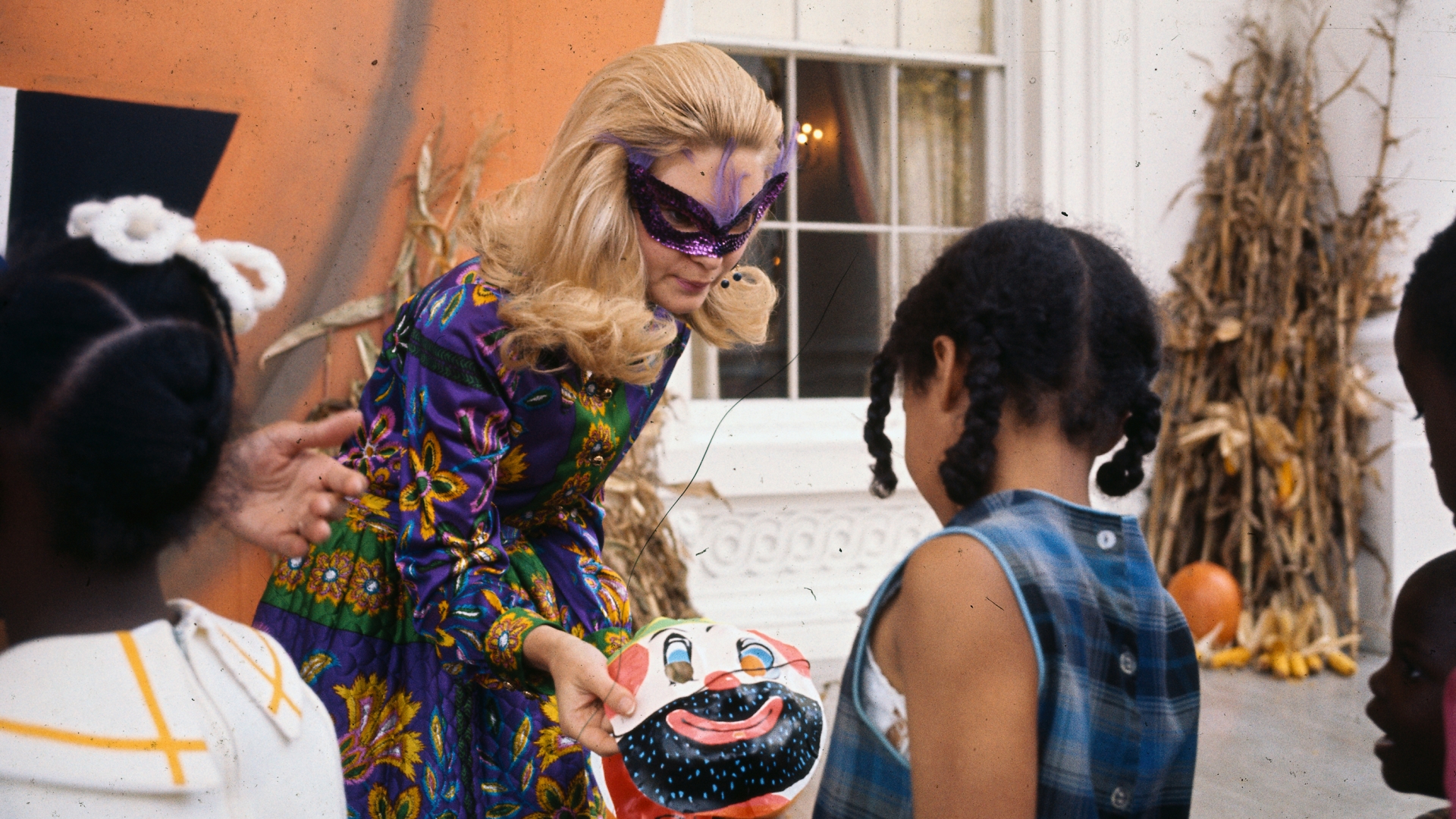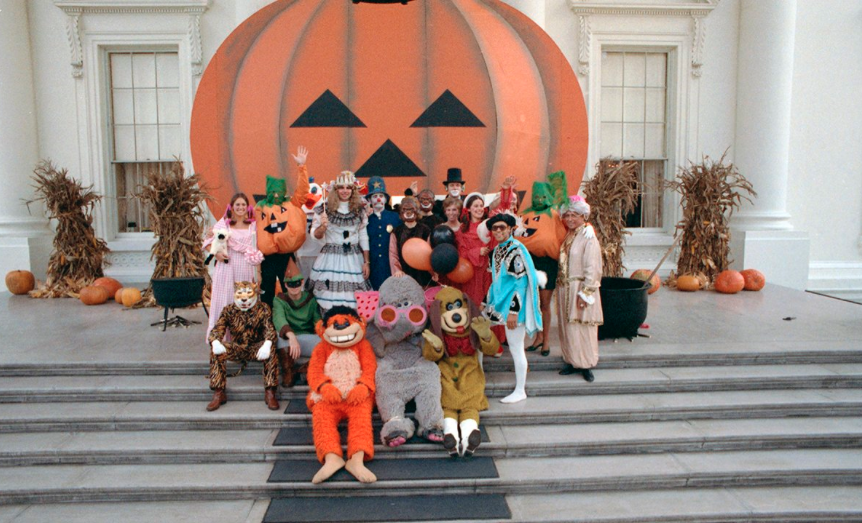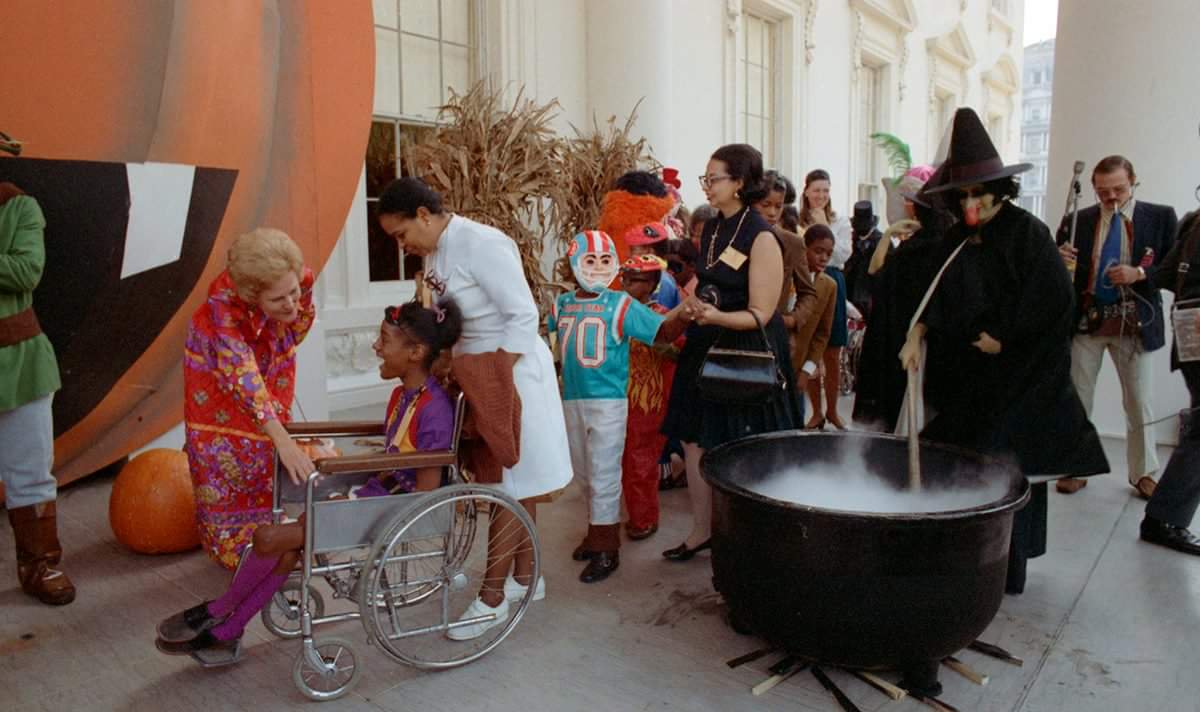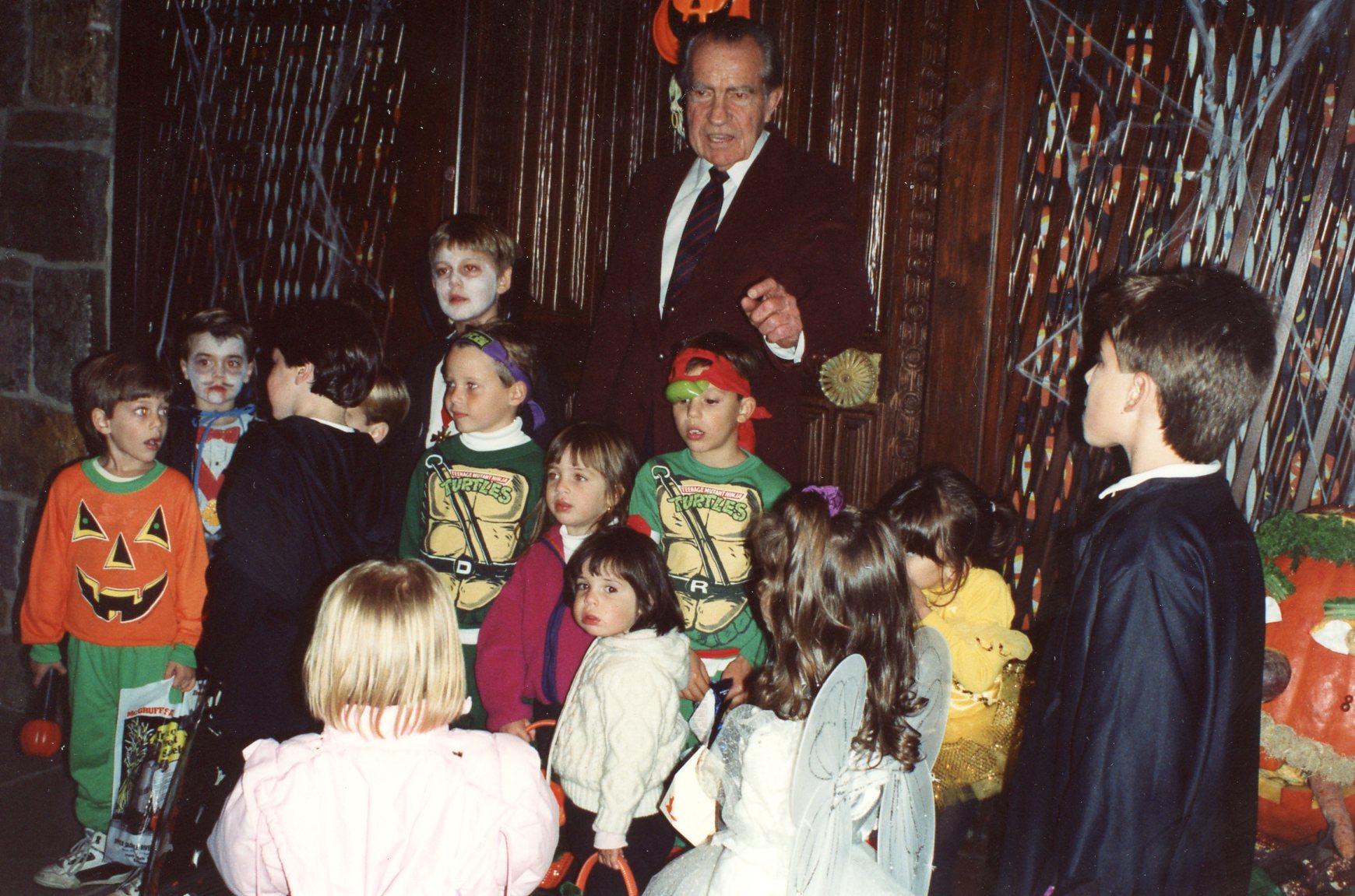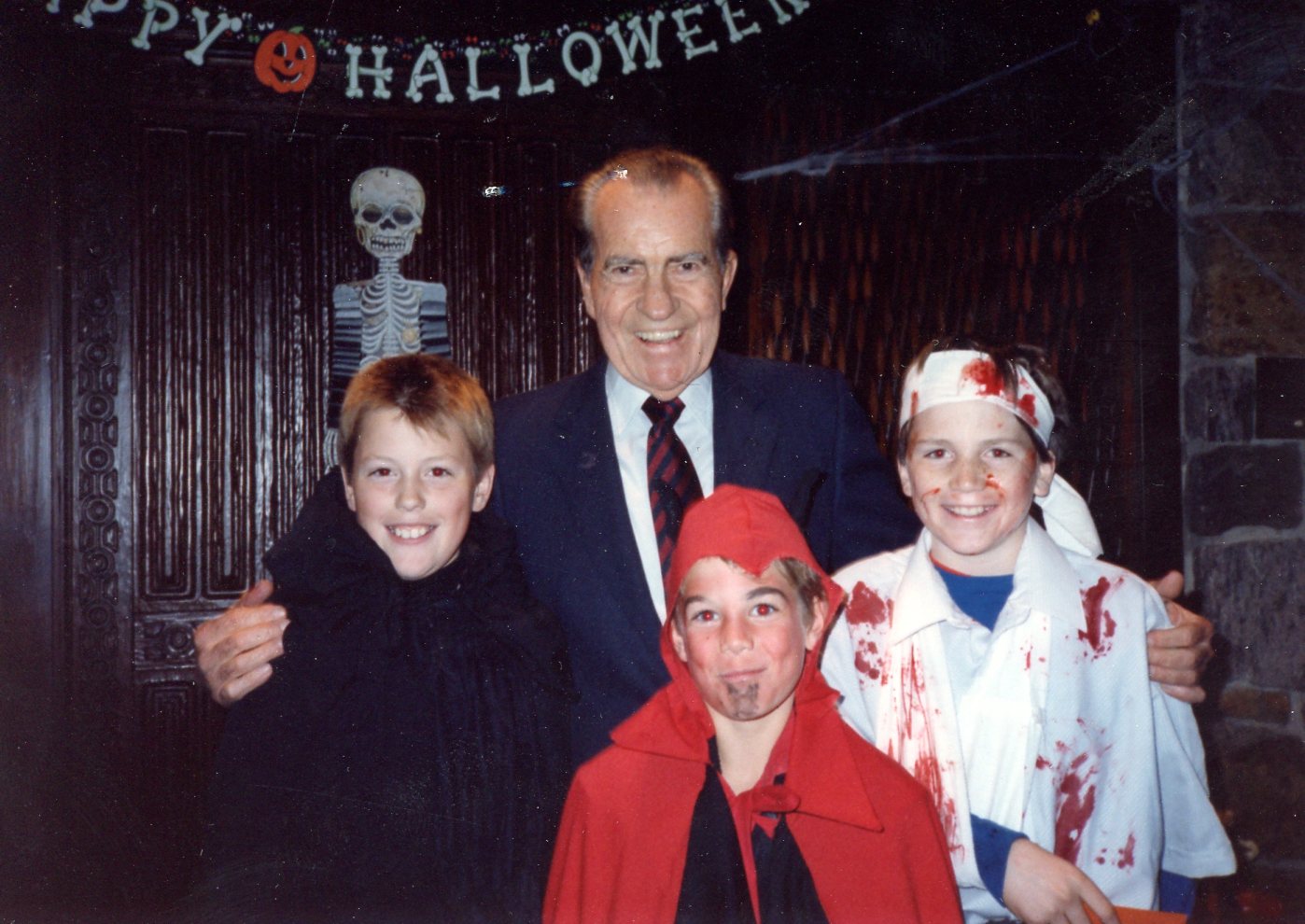
Halloween in the Nixon White House
Carl Sferrazza Anthony
In the turbulent times during which Richard Nixon served as president, the White House continued to serve as a familiar, if a subtle symbol of national unity. And certainly, regardless of any citizen’s political, regional, or socioeconomic identity, the annual recognition of familiar annual holidays mark not only the annual passage of time but are simultaneously shared nationwide.
Under the direction of First Lady Pat Nixon, the symbolism of the White House and annual American holiday celebrations were converged as never before, uniquely celebrated at times during the five and a half year administration.
Mrs. Nixon’s holidays in the White House proved to be yet another example of her innovative efforts to honor the tradition of asserting that, although the residence of presidential families, the old mansion was always “the people’s house.”
Here is a brief look at how the First Lady and her family marked the first big holiday of the autumn season, Halloween, in a way that shared the house with the people.
In the 1950s, the Nixon family certainly was part of this emerging American tradition, especially with their two young daughters, Tricia (born in 1946) and Julie (born in 1948). In 1954, news photographs showed Second Lady Pat Nixon, taking time out from her official schedule of events as the wife of the Vice President, helping Julie and Tricia to dress in Halloween costumes that she made for them. Nor did Pat Nixon let politics prevent the family from celebrating the holiday. Joining Vice President Nixon on a mid-term election swing to the Pacific coast in 1958, she also brought along their daughters. Some eight thousand feet in the air on a chartered Continental Air Lines campaign plane, the Vice President had the aisles hung with plastic orange jack-o’-lanterns, while stewardesses disguised themselves behind red eye-masks. Meanwhile, while she joined her husband at a campaign rally in Seattle, Mrs. Nixon arranged for a Republican precinct committeewoman to get devil and ghost costumes for Julie and Tricia, respectively; then the Nixon daughters joined the woman’s children in prowling their neighborhood, going door-to-door trick-or-treating, as they were trailed by a Secret Service agent and a Seattle detective.
First Lady Mamie Eisenhower was the first White House resident to acknowledge the holiday, by hosting a 1958 luncheon for women guests in a State Dining Room trimmed with autumn décor like cornstalks and pumpkins, and commercial Halloween novelties.
In 1963, First Lady Jacqueline Kennedy dressed up her young children Caroline and John in costumes and, along with sister-in-law Jean Kennedy Smith and her young son, took them to the private homes of friends in Georgetown for trick-or-treating, ending with a visit to the President in the Oval Office.
Several years later, Lady Bird Johnson joined an informal Halloween party attended by her daughter Luci, where all the guests donned commercial masks for a photo. At the time, however, no photographs of the First Families or news about their events of October 31 were made public.
The tradition of sharing a White House Halloween with the public, however, began with the Nixon family, during their first year in residence there. Coordinating it all with Pat Nixon’s Social Secretary Lucy Winchester, the idea of a bona fide holiday party was prompted by First Daughter Tricia Nixon, who was then living in the White House. “It is one of my favorite holidays, and I thought it would be something fun for the children,” she told the press. At the time, Tricia was volunteering as a tutor for two children, as part of Widening Horizon, a program of the Urban Service Corps.
Coordinating it all with Pat Nixon’s Social Secretary Lucy Winchester, the idea of a bona fide holiday party was prompted by First Daughter Tricia Nixon, who was then living in the White House. “It is one of my favorite holidays, and I thought it would be something fun for the children,” she told the press. At the time, Tricia was volunteering as a tutor for two children, as part of Widening Horizon, a program of the Urban Service Corps.
On the afternoon of October 31, 1969, some two hundred and fifty local children who participated in the program arrived at the White House North Portico by bus, greeted by the sounds of a gasping, 1912 old-fashioned calliope, churning out standards like “Sweet Rosie O’Grady” and “The Sidewalks of New York.”
The familiar white plaster molding of the regal White House north entrance door was gone. In its place was a smiling, two-story pumpkin, a cloth image wrapped over a 17-foot high plywood platform that reached to the second floor of the mansion.
Dressed in dangling gold earrings, a purple harlequin mask and “gypsy look” long dress of purple and green paisley, Tricia Nixon, welcomed the children on the steps. Nearby were two witches stirring iron cauldrons filled with dry ice to emit smoke, and gave each child a yellow-and-black poncho and masks depicting either a wild tiger, a pirate or a clown.
Not far from the president’s daughter, however, there lurked an ominous figure in a black cape. As he neared Miss Nixon, he suddenly opened his mouth just inches from her neck and bared sharp fangs. Press photographers frenziedly snapped away, capturing the moment for the world to see.
To 1969 Americans who watched the popular gothic horror drama, Dark Shadows, the day’s special guest star, actor Jonathan Frid, was instantly recognizable as his famous vampire character Barnabus Collins. His move prompted Tricia Nixon into a laughing smile. And his vampire teeth? As he told the Los Angeles Times that day, “I’m afraid I’ve destroyed the illusion. I keep taking the costume fangs out and showing the kids how they work and now they just don’t believe anymore. It’s just like grandpa’s dental plate.” He introduced himself as, “Senator Barnabas, Democrat from Transylvania.”
Once the children stepped through the smiling black gap-toothed pumpkin mouth, they walked in, passing long tables covered in black cloth, where dozens of grinning and grimacing pumpkins sat, the faces of witches, goblins, even an Uncle Sam all carved and decorated by different units of White House staff members.
Social Secretary Lucy Winchester cooked up the contest as a way of coaxing staff members to help decorate the state floor for the party. The winning pumpkin, a witch with a pickle for a nose, with red apple for ears and mouth, was awarded to Secret Service agent Ron Pontius, the prize being a bottle of champagne. The contest judge was Nancy Hanks, President Nixon’s cultural affairs assistant. Second prize was granted to the foreign policy staff, then headed by Henry Kissinger. The two duty officers who had carved it worked through the previous night, “in between the Lebanon crisis and Vietnam.”
Each room of the state floor held surprises for the guests. In the Green Room, there was a tarot card reader in harem pants. In the Blue Room were large cardboard cut-outs of a pumpkin, witch, and skeleton where guests poked their heads through an open hole to be photographed by Polaroid cameras and given the snapshot to take home as souvenirs of the day.
In the East Room, there were orange and white helium balloons bumping up against the stately ceiling, while a clown twisted other balloons into animals for the kids. Flanking the staid portraits of George and Martha Washington was long crazy carnival mirror that warped the image of all who looked into them. The dignified old room, assumed a carnival air, ringing with shouts and laughter There was a go-go girl puppet dancing in a marionette show staged by the Smithsonian Puppeteers, a fortune-teller in turban reading the future from a crystal ball and a long line of participants waiting to dunk their faces in large tubs of water with floating apples, eager to compete in an apple-bobbing contest.
Three magicians performed tricks continuously, pulling doves and white rabbits out of hats. Notable was a junior magician duo, brothers Arnold and Larry Davidson, aged fourteen and twelves, respectively. They’d written to Tricia Nixon, offering to perform their act and she let them first audition for her several days earlier. Most impressive was how Larry sliced magic swords into Arnold’s head.
Everyone eventually made their way into the State Dining Room for sweet treats. During the nearly two hour party, the young guests feasted on ice-cream molded into the shape of witches and pumpkins, several dozen chocolate cake with orange frosting, over a thousand cookies and twenty-five gallons of spiced orange punch. As they munched away, the children were told Halloween stories, set to scary music.
The First Lady was not in attendance that year, having to cancel her public schedule due to a twenty-four hour flu, but her daughter certainly enjoyed herself. Admitting that it was one of her favorite holidays, the First Daughter declared, “I want to do it again next year.” Part of the fun for her might have been that behind her mask, not every guest knew who she was, even in what was her home. One kid handed her a half-eaten apple, whole another simply asked, “What do you do?”
As the witching hour approached, and the buses waited outside to return the children, they followed a pied piper in the form of the President’s deputy special assistant John Neidecker, who guided them all out of the rooms with his rendition of “Show Me the Way to Go Home.” There was one final surprise. As the children gathered in the entrance hall, before exiting out onto the North Portico, the Marine Band broke into a loud rock song, it sending the kids into “frenzied dancing that shook the rafters.”
In 1971, the First Lady maintained the Halloween tradition by hosting the first and only record of Halloween trick-or-treating at Camp David. While there for the weekend with the President, Mrs. Nixon encouraged the children of personnel who worked at the presidential retreat to don costumes and she didn’t disappoint them, offering candy treats for their bags — on the promise of them playing no tricks on her.
Two days earlier, the First Lady had hosted the second Nixon White House Halloween party, for about one hundred fifty children with disabilities from the C. Melvin Sharp Health School and Hospital for Sick Children. For the party, Pat Nixon wore a wildly-patterned red gypsy-style dress. On the steps of the North Portico, she greeted the buses of arriving children, and laughingly posed with the costumed characters of the popular children’s’ television show, The Banana Splits. She sat in the East Room with her young guests, taking in an abbreviated showing of “Disney on Parade,” with the familiar costumed characters circulating among the excited children. Finally, she led them all into the State Dining Room for cake, ice cream, cookies, and punch.
In 1972, there was a third Nixon White House Halloween party, this one again hosted by First Daughter Tricia Nixon Cox, who had been married sixteen months earlier in the Rose Garden. The guests were about two hundred children and senior citizens, participants in the Foster Grandparents program. Entertainment for this Nixon Halloween party was highlighted by the legendary circus clown Emmett Kelly, Jr., and complemented by trained dogs, and even chimpanzees from the popular children’s television series Daktari.
Working during the daytime hours, President Nixon was unable to attend any of the Halloween parties but learned in detail directly from Tricia about at least the one held in 1972, in a phone call that was recorded. The family’s holiday spirit, however, continued in later years. While the former President and Mrs. Nixon were living in Saddle River, and then Park Ridge, New Jersey, it was known among locals that the Nixons welcomed and encouraged young trick-or-treaters to come knock on their door. One later recalled that they received a can of soda, a choice of a candy bar and a specially-printed Halloween greeting card that was autographed by Nixon himself.

